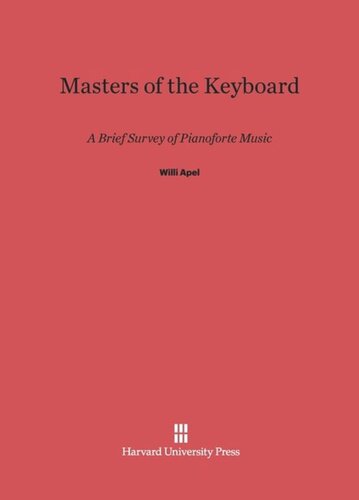

Most ebook files are in PDF format, so you can easily read them using various software such as Foxit Reader or directly on the Google Chrome browser.
Some ebook files are released by publishers in other formats such as .awz, .mobi, .epub, .fb2, etc. You may need to install specific software to read these formats on mobile/PC, such as Calibre.
Please read the tutorial at this link: https://ebookbell.com/faq
We offer FREE conversion to the popular formats you request; however, this may take some time. Therefore, right after payment, please email us, and we will try to provide the service as quickly as possible.
For some exceptional file formats or broken links (if any), please refrain from opening any disputes. Instead, email us first, and we will try to assist within a maximum of 6 hours.
EbookBell Team

4.1
80 reviewsWilli Apel, world-famous musicologist, presents with freshness and vitality a succession of landmarks in the history of keyboard music. From the vast musical literature composed for organ, clavichord, harpsichord, and pianoforte from the Middle Ages to the present day, Apel has selected for reproduction one hundred and forty compositions—all but a few of them individually complete works, or independent sections of major works—which illustrate its entire development. His text forms a continuous commentary on the significance of these musical examples for the development of key-board music as a whole. His history is addressed mainly to the musical amateur, but based as it is on extensive musicological research it includes much material of interest to the student and scholar.
In his opening chapters Apel picks up the threads of the earliest forms of keyboard instruments and music before 1500. In succeeding chapters he surveys sixteenth-century organ and virginal music; the Baroque and Rococo periods; the Classical period; the Romantic school; and, finally, modern piano music.
Apel tells the story of this development in a readable manner, avoiding unnecessary technicalities, but fully and clearly explaining all technical terms used in the text. The distinguishing feature of his book is the inclusion, for the first time in any comparable work, of complete compositions rather than short musical illustrations: most of this valuable materials is not readily accessible to the amateur, nor even to many music students.